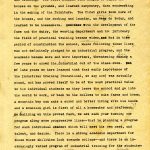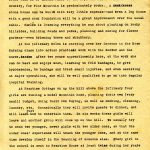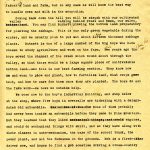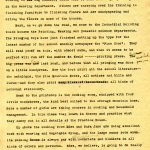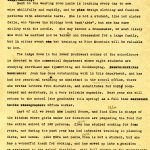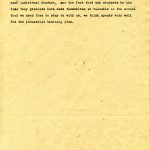Pine Mountain Settlement School
Series 10: BUILT ENVIRONMENT
Series 13: EDUCATION
1936
Pine Mountain Industrial Courses
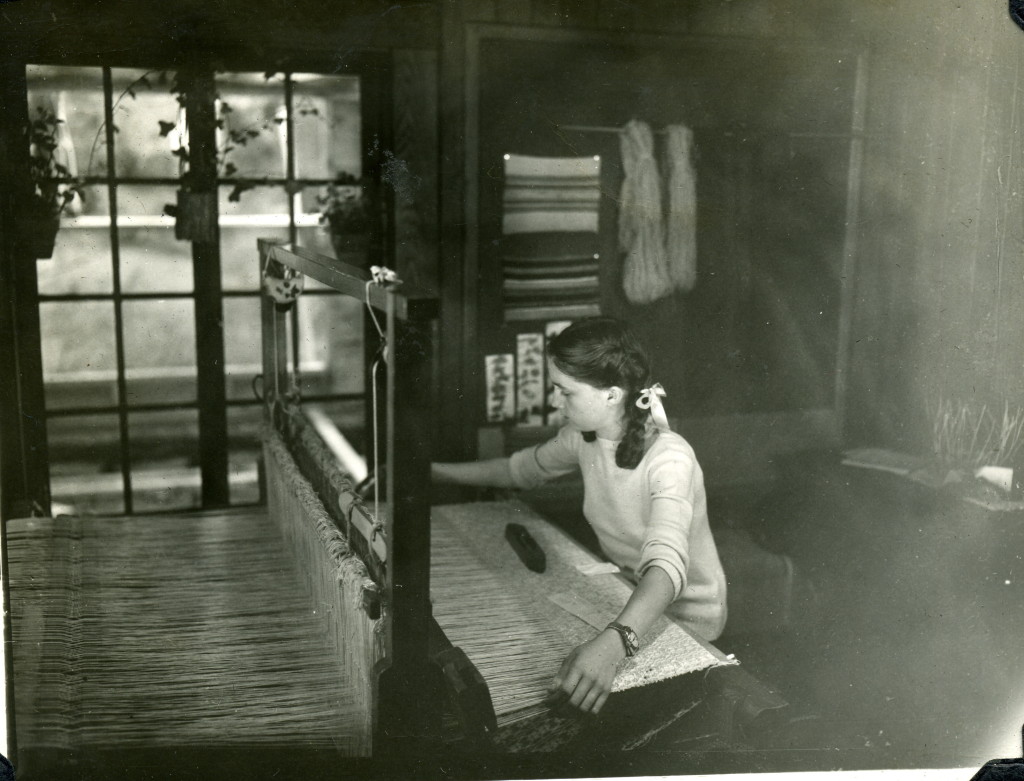
Weaving. Grace Rood Album. [rood_076.jpg]
TAGS: industrial training, vocational education, Glyn Morris, print shop, mechanics, Infirmary, Barn, Woodworking Shop, Boy’s Industrial Building, Girl’s Industrial Building, Practice House (Country Cottage), craft work, weaving room, Laurel House, students
EDUCATION 1936 Pine Mountain Industrial Courses
(1936 Curriculum Walking Tour by Glyn Morris)
INTRODUCTION
Industrial Education has always been central to the educational programs at Pine Mountain Settlement School. During the Glyn Morris years, industrial education was a particular emphasis and was formalized as part of the educational curriculum.
In the following 1936 report, Glyn Morris outlines in a curriculum walking tour the educational objectives of the current curriculum at Pine Mountain Settlement School. The tour provides a general overview of the built environment of the School and the educational programs at Pine Mountain. Morris walks the reader through the physical space and the educational activities that occur at each point in the tour of the campus. The snapshot he provides is very graphic and allows the reader to visualize the many integrated educational projects throughout the campus as they occur within the built environment.
TRANSCRIPTION: EDUCATION 1936 Pine Mountain Industrial Courses
PINE MOUNTAIN’S INDUSTRIAL COURSES
From the very beginning in 1913, Pine Mountain Settlement School has tried to be thoroughly practical in its teaching and training. The first student boys helped to build the houses on the grounds and learned carpentry, then woodworking in the making of the furniture. The first girls took care of the houses and the cooking and laundry, as our girls do today, and learned to be homemakers. With the development of the farm and the dairy, the weaving department and the Infirmary the field of practical training became wider.
But in the period of construction the school, although following these lines, was not definitely pledged to an industrial program, and the academic became more and more important, threatening for a few years to crowd the industrial out of the classroom. Of later years we have learned that that early importance of the Industrial training (vocational, we say now) was actually sound, and has proved itself to be of the most practical value to the individual students as they leave the school and go into the world to work, or back to the hollows to make farms and homes.
A mountain boy can make a surer and better living with his hands and a mountain girl is, first of all, a homemaker and craftsman. Building on this proved fact, we are each year tuning our program along more progressive lines — that is, planning a program for each individual student which will meet his own need, and talent and desire. There is a strong academic department for those whose abilities look towards college — and there is an increasingly varied program of industrial training for the students — the great majority who find their forte along these different lines.
I am eager, therefore, to take you on a tour about our grounds to observe the work going on in the different departments
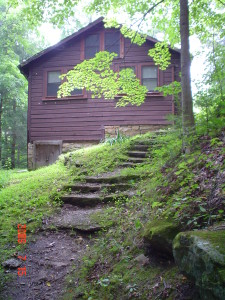
Infirmary [Hill House] pathway rockwork_021_hillhouse_path_steps
Perhaps you will first notice Carlos, who is working on a rock wall and stone steps, the wall to bound a terrace where the onions are planted, and the steps leading up the Infirmary hill. Work with stone will be of untold value to the boys who build homes in this country, for Pine Mountain is predominantly rocky. A stone house can be built with very little expense — and even a log house with a good rock foundation will be a great improvement over the usual cabin. Carlos is learning everything he can about planting on rocky hillsides, building roads and paths, planning and caring for flower gardens — even trimming trees and shrubbery.
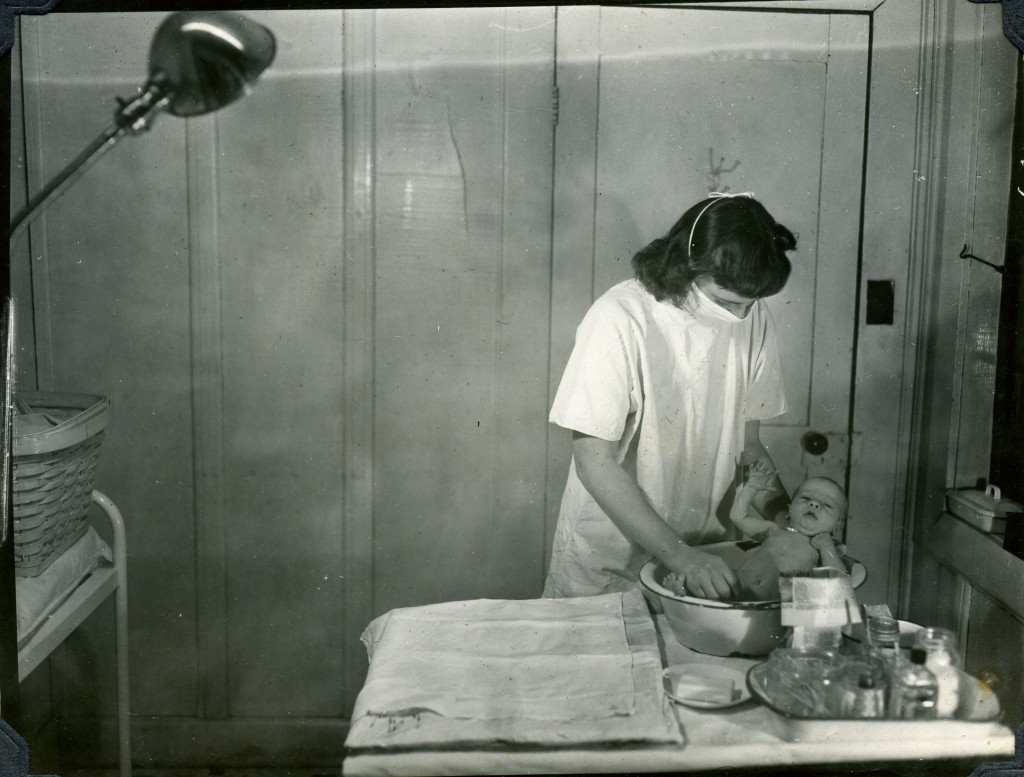
Nurse weighing baby. Grace Rood Album. [rood_086.jpg]
At the Infirmary Helen is carrying over her lessons in the Home Nursing class into actual practical work with the doctor and the nurse, After two years apprenticeship here at the work she can do best and enjoys most, learning to fold bandages to give hypodermics, to bandage and treat small injuries, and even assisting at major operations, we will be well qualified to go on into regular hospital training.
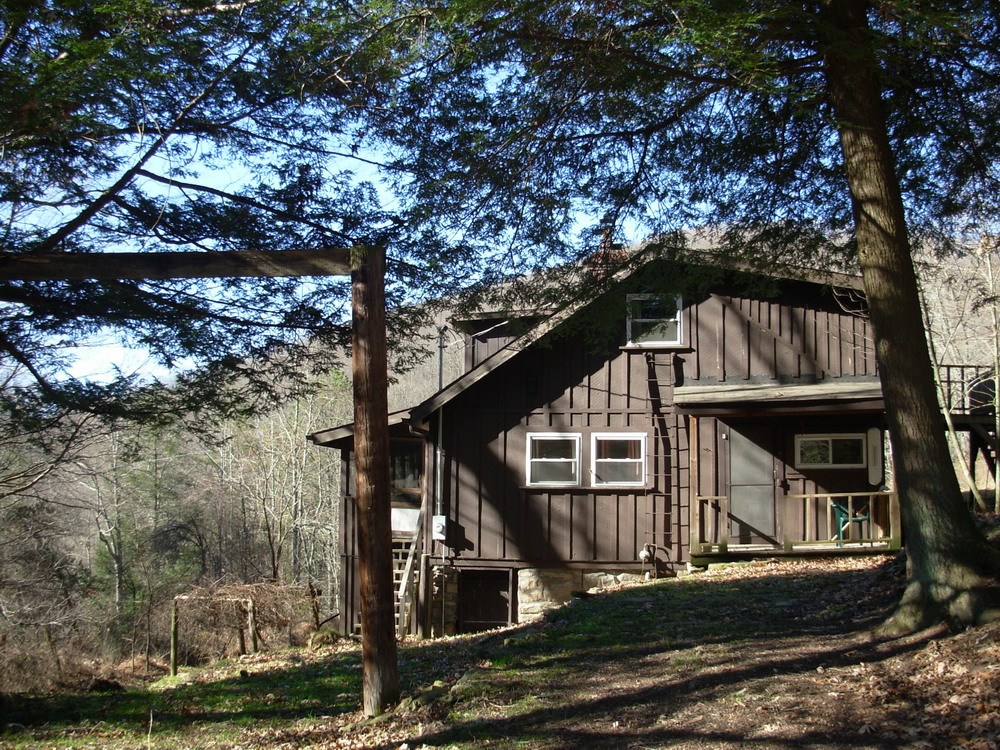
Practice House (Country Cottage). Side view. 2017. [HW_country_cottage2.jpg]
At Practice Cottage [Country Cottage] on up the hill above the Infirmary four girls are running a model mountain home, planning their own (very small) budget, doing their own buying, as well as cooking, cleaning, laundry etc,. Occasionally they will invite guests to dinner and will learn just how to entertain them. In six weeks these girls will leave and another group will come up on the hill. We usually try to send two younger, newer girls with two older ones, so that the older ones’ experience will teach the younger ones, and at the same time develop itself in the teaching of someone else. Every girl in the school is sent to Practice House at least twice during her years at Pine Mountain.
Coming back down the hill we pass the Barn where Tommy Madon and his crew of boys have in charge the dairy of sixteen cows. Tommy has done very good work in his course in dairying and has learned
Page 3
to be so efficient in his industrial work that he has been given the entire responsibility. The promotion has done another service in adding to Tom’s self-confidence and happiness.
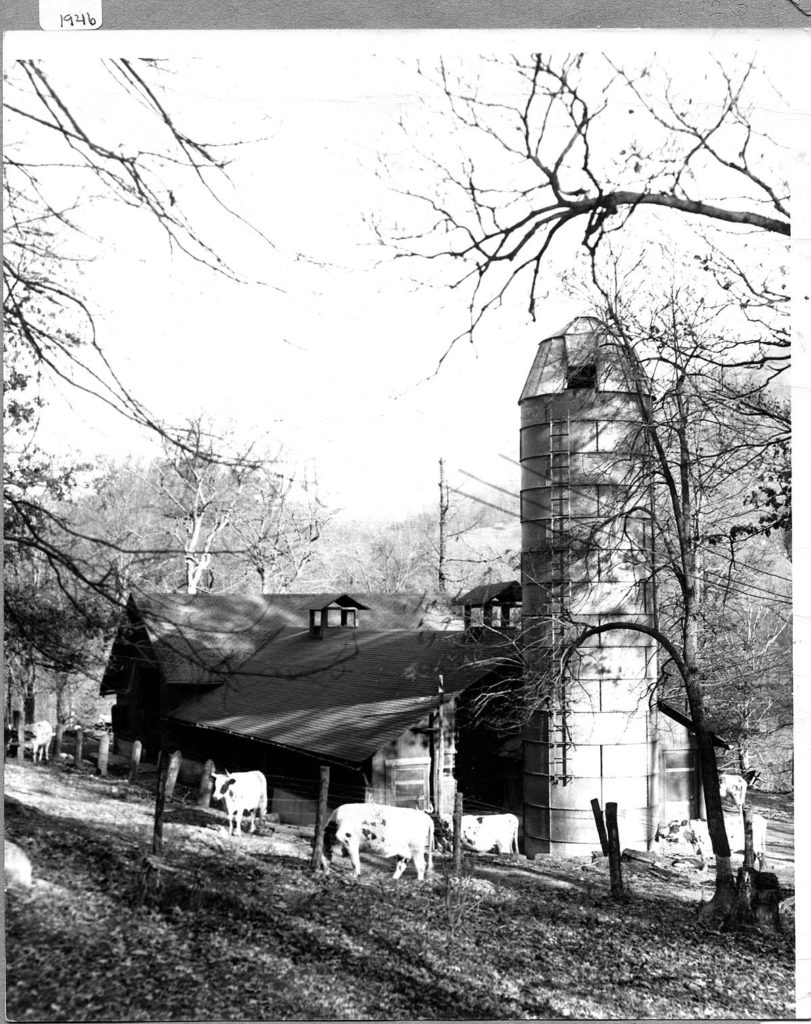
Barn at Pine Mountain Settlement School. [VII 64_life_work_004.jpg]
He may go to an agricultural school after he leaves us — or he may go back on his father’s land and farm, but in any case, he will know the best way to handle cows and milk in the mountains.
Coming back down the hill you will be struck with our cultivated valley. You may find Burnett walking behind Pearl and Bess, our mules, plowing the bottom land preparatory for planting the cabbage, This is our only green vegetable during the winter, and we usually plan to put out about nine-thousand cabbage plants. Burnett is one of a large number of the big boys who have chosen to study Agriculture and work on the farm. Five or six years ago ([in pencil] “look this up’) the boys moved the channel of the creek which wound about through the valley so that there would be a large square piece of cultivatable bottom land — and this is our best farming section. They know how and when to plow and plant, how to fertilize land, what crops grow best, and how to care for them once they are planted. The boys do all the farm work — we have no outside help.
We come now to the Boy’s Industrial Building and stop below at the shop where five boys in coveralls are tinkering with a dilapidated old automobile. Some of them probably had never been inside an automobile before they came to Pine Mountain. But they learned that they liked engines and could do mechanical things with skill, and so they have along with their classes in auto-mechanics, the care of the school truck, the power plant, and all the furnaces on the grounds Bob is a first-class driver now and hopes to find a job sometime driving a cross-country bus.
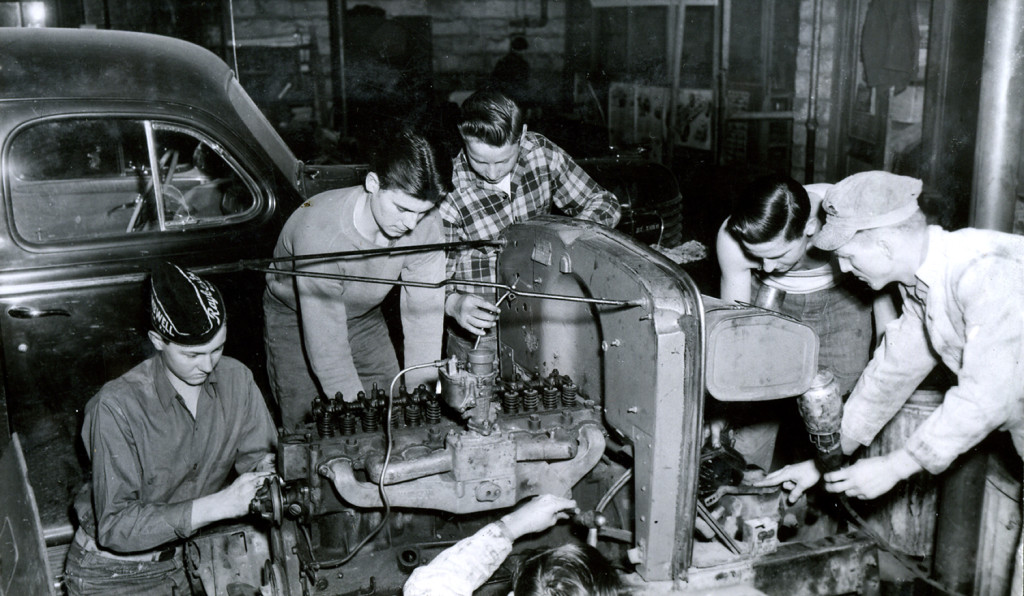
Auto Mechanics Class: Clayton Sturgill, Ralph Scott, Earl Brown, Arles Centers, Mr. Link. [nace_1_049b.jpg]
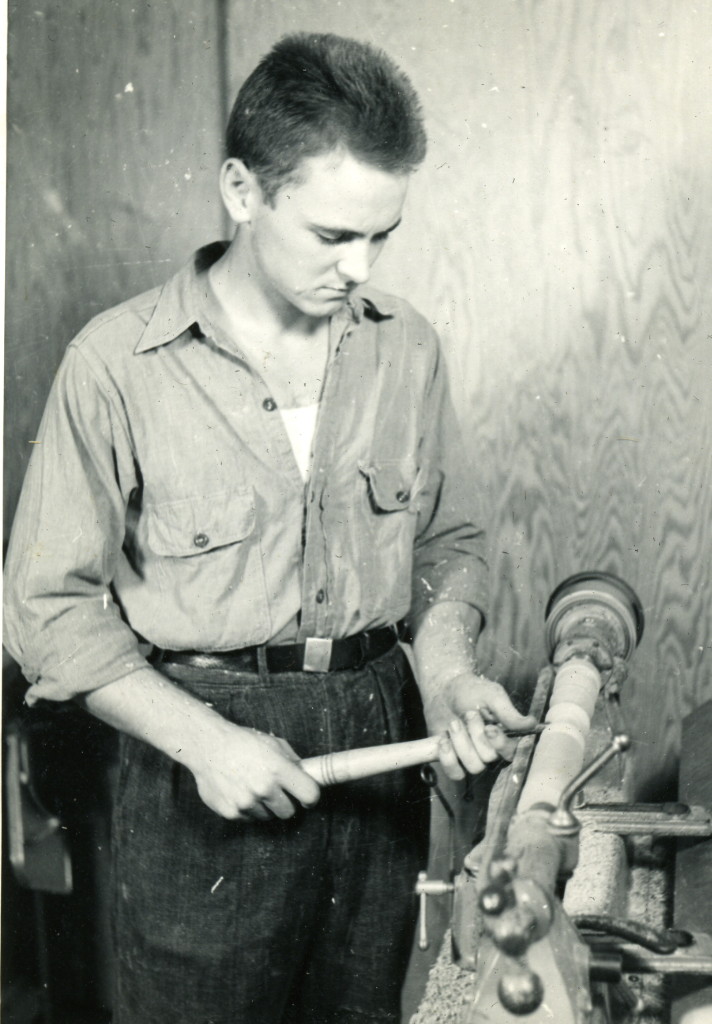
Wood working on lathe. Grace Rood Album. [rood_061jpg]
Above the shop Mr. Callahan [‘Boone’ Callahan] is conducting a class in manual training and woodwork. Ben is just putting the finishing touches on a really professional chest of drawers and will be proud to show you
Page 4
the handsome oak and chestnut desk which he made for the office, and the bookshelves and cupboards completed just two weeks ago for one of the houses. In one class all the boys are working on bag handles, which will be made into bags by the girls in the weaving department. Others are carrying over the training in finishing furniture to finishing floors and are sandpapering and oiling the floors in some of the houses.
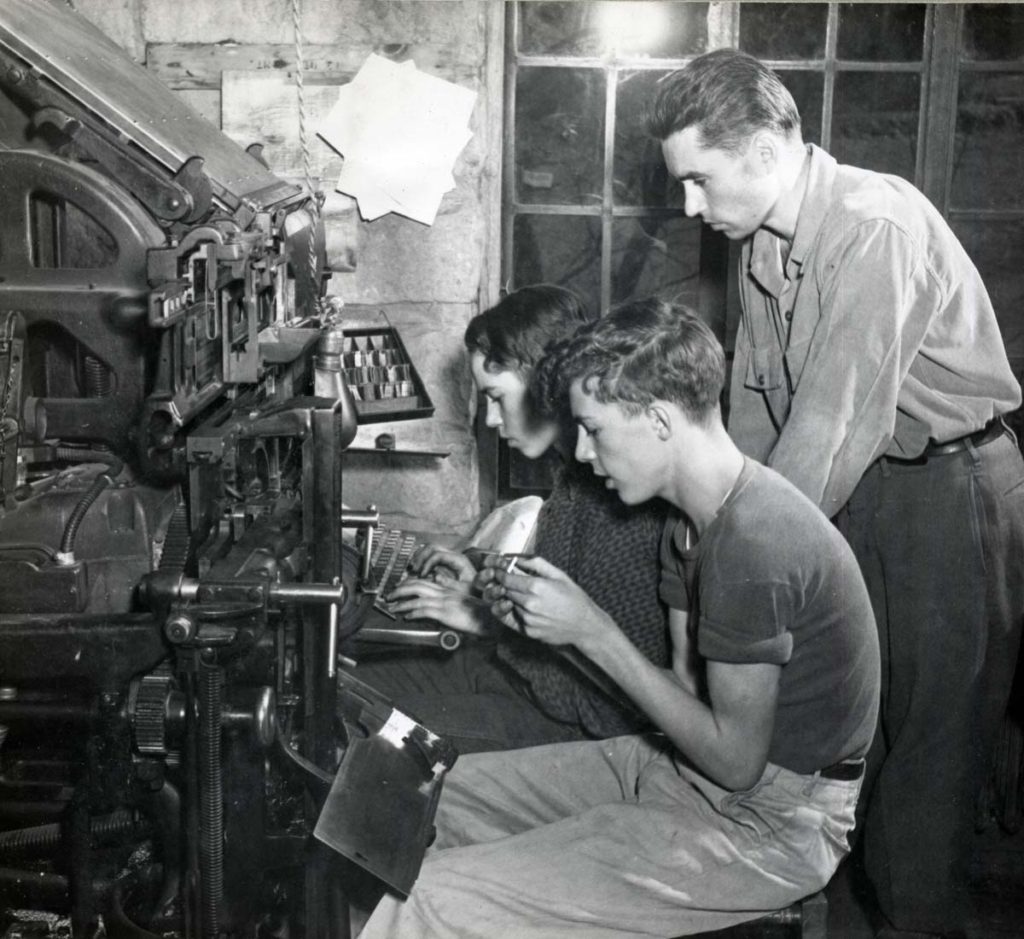
“Print Shop, 1948. Hoid Brown, Billy Gus Howard, Mr. Nichols.” [nace_II_album_038.jpg]
Next, as we go down the road, we come to the Industrial Building [later called Girl’s Industrial Building] which houses the Printing, Weaving and Domestic Science departments. The printing boys have just finished setting up the type for the latest number of the school monthly newspaper the “Pine Cone“. They will read proof on this, with utmost care, and when it seems to be perfect will run off the number on their —– printing press. Our Deland Hand Power Press came last year, and before that, all printing was done on a little hand press. Now the boys print all the school literature — the catalog, the Pine Mountain Notes, all notices and bills and lists — and they also print all kinds of personal stationery.
Next to the print shop is the cooking room, equipped with four little woodstoves, the kind best suited to the average mountain home. Here a number of girls are taking courses in cooking and household management, In this class, they learn in theory and practice what they carry out in all details at the Practice House.
Up above the cooking room, Edra and Sara Jane are doing excellent work with weaving and vegetable dying, and the large sunny room with its shining looms is always gay with clanging looms, with coverlets and blankets in all kinds of colors and patterns. Edra, we believe, is going to do really splendid things with dying and planning special color combinations. She has an unusually acute sensitivity to color — a happy discovery for Edra and for Pine Mountain since she seems to have no ability along other lines. So often we find that the boys and girls who would
Page 5
be totally unsuited to any other type of education, have startling talent in the craft work — an ability which would be forever lost if we did not plan here to discover and develop it to its fullest and rarest.
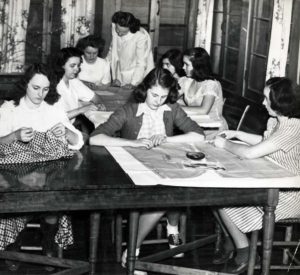
‘Home Economics” with list of names of girls sewing. [nace_II_album_039.jpg]
Next to the weaving room Lanie is learning every day to sew more skillfully and rapidly, and to design clothing and fashion patters with admirable taste. She is not a student like her sister Celie, who “knows the Biology book back’ards,” but she has rare ability with the needle. She may become a dressmaker, or most likely she will be married and be tailor and dressmaker for a large family, but in either event her training at Pine Mountain will be valuable to her.
The large room in the lower Southwest corner of the schoolhouse is devoted to the commercial department where eight students are studying shorthand and typewriting and bookkeeping. Joan [Ayers] has done outstanding work in this department and has had her practical training as an assistant in the school office, where she writes letters from dictation and substitutes now and then for the book-keeper and secretary, in a very reliable capacity. Next year she will return to the school (she graduates this spring) as a full-time office worker.
Last of all, we reach Laurel House, [Laurel House I] and find Cloa [corrected as Chloe. This is Chloe Smith, later Chloe Bunch] in charge of the kitchen where girls under her direction are preparing the food for the entire school of 120 persons. Chloe has studied cooking for four years, and during the past year has had intensive training in planning diets, and menus. Like Edra and Lanie, Chloe is not a student, but she has a wonderful knack for cooking and has moved up into a position as assistant to the school Dietitian, with the full charge on the Dietitian’s free days. Next year she will return as a full-time worker in the kitchen.
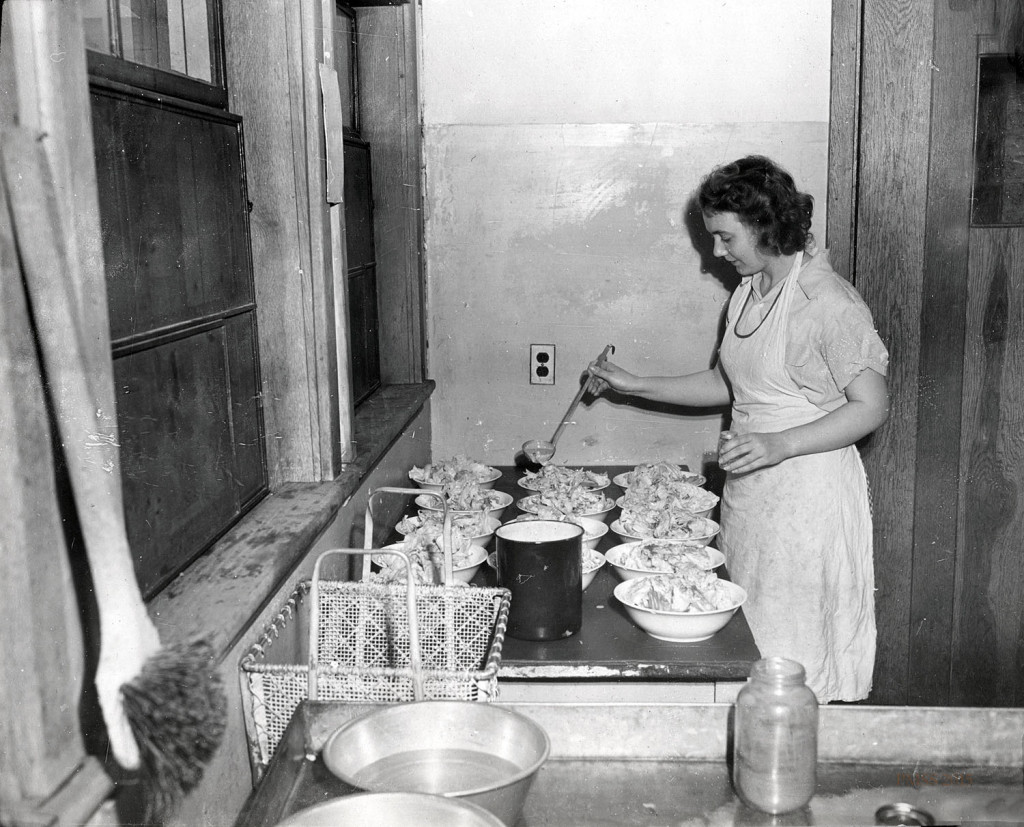
Laurel House II, interior view of kitchen. Arthur W. Dodd Album. Chloe Smith Bunch [?] [dodd_A_032_mod.jpg]
This is our plan in action, Next year perhaps we can show you courses and work in forestry, which is just beginning this year.
Page 6
There will certainly be farther and faster strides along the line of progressive, vocational education. Our small student body, makes it possible for us to concentrate and interest ourselves in each individual student, and the fact that our students by the time they graduate have made themselves so valuable in the school that we need them to stay on with us, we think, speaks very well for the Industrial training plan.
GALLERY: EDUCATION 1936 Pine Mountain Industrial Courses
- Industrial Education 01 [indust_courses_1936-7_001.jpg]
- Industrial Education 02 [indust_courses_1936-7_002.jpg]
- Industrial Education 03 [indust_courses_1936-7_003.jpg]
- Industrial Education 04 [[indust_courses_1936-7_004.jpg]
- Industrial Education 05 [[indust_courses_1936-7_005.jpg]
- Industrial Education 06 [indust_courses_1936-7_006.jpg]
Return To:
EDUCATION Guide
See Also:
BUILT ENVIRONMENT 1936 Walking Tour of Campus –
Large images of the 6-page “Walking Tour” document.
GLYN MORRIS 1937-38 Writing Philosophy of Secondary Education
EDUCATION Educational Programs Guide
KENDALL T. BASSETT Vocational Guidance Program 1929

